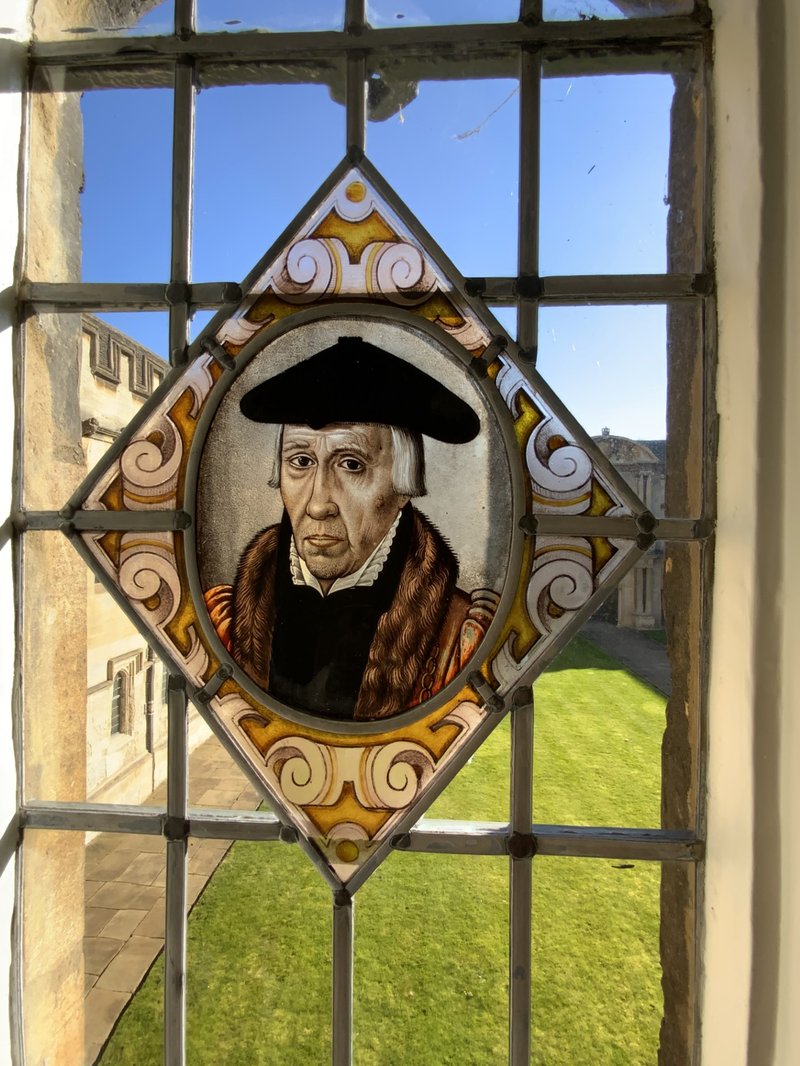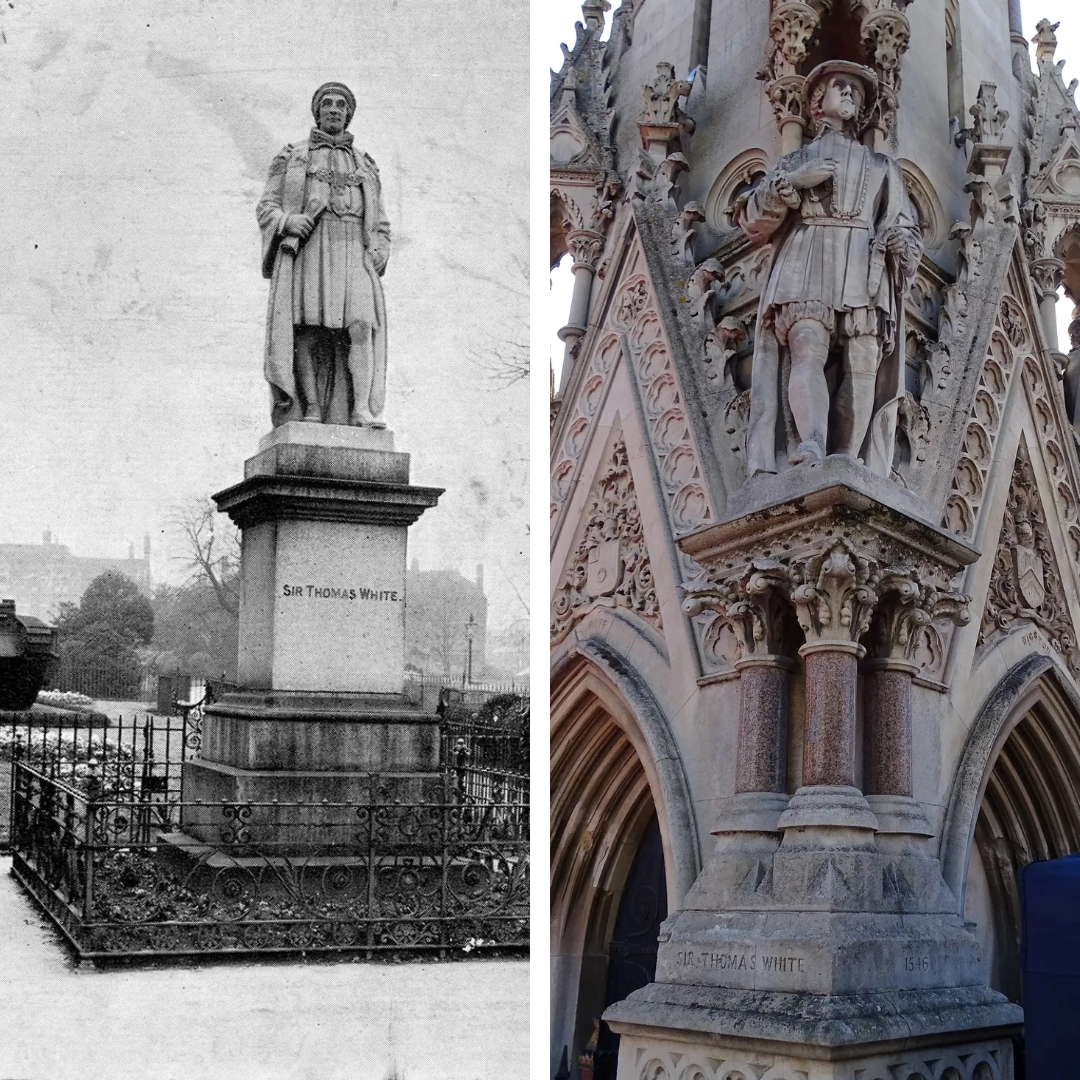Marking the Anniversary of Sir Thomas White's Death
Sir Thomas White was born in Reading c. 1495 to William White, a clothier, and his wife, Mary. He entered his father’s trade at 12, serving an apprenticeship to Hugh Acton, a prominent member of the Merchant Taylors’ Company in London. Acton was known for his munificence, having established various loan funds for apprentices in London. He was particularly generous towards White, bequeathing his apprentice £100 in 1520 with which to set out on his own.
Acton’s gift proved well-spent, as White quickly established a prosperous business, the start of his career coinciding with years of plenty for the sixteenth-century cloth trade. Only twelve years after he was established in business by Acton, White’s wealth was assessed at £1000. Whilst cloth traders such as White were some of the wealthiest merchants in Tudor England, they were also some of the most charitable.

White’s large-scale philanthropy began in 1542 with a gift of £1400 to the city of Coventry. White recognised that the city was ‘in Greate Ruine and decay’ after the decline of its broadcloth industry. With White’s gift, the mayor and aldermen of Coventry purchased old priory lands yielding approximately £70 per annum. The income from these estates was to be loaned without interest to deserving apprentices in Coventry to help establish them in trade. White’s indenture also stipulated that the income from these lands should also be used on a rotating basis to support apprentices in four additional clothing towns: Leicester, Northampton, Nottingham and Warwick. White entrusted the supervision of this scheme to the Merchant Taylors’ Company, which he had previously served as Master. The structure of this scheme later served as the model for White’s similar loan to the city of Bristol in 1545. His £2000 gift was to be used to purchase former ecclesiastical lands, the monies derived from which would be lent without interest to young men ‘of honest fame, freemen and clothiers being preferred’ in twenty-four different cities in a rotating basis.
By the end of the 1550s, White was reckoned to be the richest man in London. He continued to give generously, directing his philanthropy towards two major educational endowments. In 1555 he founded St John’s College (read more about that here), and played a substantial role in founding the Merchant Taylors’ School in 1561. He also rose to national prominence as Lord Mayor of London and became one of Queen Mary I’s most powerful and loyal supporters. When Mary and her husband, King Philip II of Spain, progressed into London on 18 August 1554, the newly-knighted Sir Thomas rode immediately behind them.
However, it is a testament to the scale and success of White’s benefactions that he has been remembered as much for his charity as his distinguished political career. Not long after his death in 1567, White’s philanthropy was celebrated by the poet Richard Johnson in his Nine Worthies of London (1592). White was later commended as the epitome of benevolence in John Webster’s civic pageant, Monuments of Honour (1624). Moreover, his Jacobean-era portrait in Leicester commemorates him for his 'White name, White gifts, White soul', praising him as a 'White saint in heaven'. As well as portraits, statues of White survive in many of the cities which have benefitted from his gifts, including Coventry and Leicester (pictured below).
The legacy of White’s benefactions in Coventry, Leicester, Northampton, Nottingham and Warwick are not only felt through statuary and sculpture. Sir Thomas White's Charity continues to support young people in all five cities and elsewhere, offering interest-free loans to assist with the costs of setting up a business or entering into postgraduate education. (See the Leicester branch of the Charity’s website for example.)
458 years after his death, Sir Thomas White’s philanthropic legacy is not merely writ large at St John’s but remains deeply woven into the fabric of many of England’s former clothing towns and cities. His master's gift of £100 has certainly been replicated and repaid manyfold.
 Left: Statue of Sir Thomas White in Coventry (Coventry Archives). Right: Statue of Sir Thomas White in Leicester's Clock Tower.
Left: Statue of Sir Thomas White in Coventry (Coventry Archives). Right: Statue of Sir Thomas White in Leicester's Clock Tower.
Further Reading
Alexandra Shepard, 'White, Sir Thomas (1495?–1567), founder of St John's College, Oxford', Oxford Dictionary of National Biography (2004).
Robert Tittler, Townspople and Nation: English Urban Experiences, 1540-1640 (Stanford, 2001), pp. 100-120.
W.K. Jordan, The Charities of London 1480-1660: The Aspirations and Achievements of the Urban Society (London, 1960), pp. 174-75.